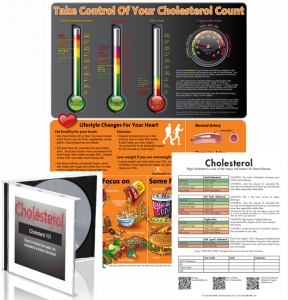In the process of my husband’s recovery from a heart attack, he has been working hard at improving his diet and exercise habits. He’s also been going to Cardiac Rehab three days a week. Near the end of the program, they sent him home with a survey to complete so that he and his instructors could see how his diet has changed.
Before the heart attack, my husband was eating a fairly healthful diet. Needless to say, I was curious to see how his survey would be “graded.” As he was completing the survey, one of the questions stood out to us both. It asked, “How many visible eggs have you eaten in the last week?”
This got him joking about “invisible eggs.” How could he eat an egg that he couldn’t see?
After some thought (and a few laughs), we realized that the questionnaire was really asking about the number of whole eggs he was eating. These would be eggs eaten as scrambled eggs, over-easy, or even deviled eggs. This type of egg is easy to see and easy to count.
The other type of eggs, “invisible eggs,” must be the ones that are combined with other foods. You know, the eggs in cakes, cookies, meat loaf, crab cakes and combination foods. These are the eggs that you don’t see, and that makes them more difficult to count.
The American Heart Association recommends cutting back on foods that are high in dietary cholesterol. They say to eat less than 300 milligrams (mg) of dietary cholesterol each day. That’s been the recommendation for all Americans with normal blood cholesterol levels for at least 20 years. That’s nothing really new.
Research is still showing that diets high in dietary cholesterol do have an effect on blood cholesterol levels, especially LDL (a.k.a. “bad”) cholesterol. I have seen some recommendations for people with heart disease to try to keep this number to 200 mg a day — but no one has made that recommendation to us.
What does 200-300 mg of cholesterol per day look like? Not a lot.
A medium-sized egg has about 185 mg of cholesterol. A large egg has about 215 mg. Two eggs for breakfast would quickly wipe out the recommendation of less than 300 mg a day.
All the cholesterol in eggs is in the yolks. Egg whites without the yolks are a heart-healthy protein. We’ve gone to substituting liquid egg whites for most of the eggs we eat. In most recipes, two whites will equal a whole egg. Replacing an egg with egg whites also helps reduce total fat and total calories in the diet.
Baked goods and other foods often contain “invisible” eggs. Those “invisible” eggs count toward that 300 mg a day limit too.
Keep in mind that two eggs spread over 12 muffins or a whole cake don’t add up as quickly as those two eggs eaten sunny-side up.*
Remember, eggs are only part of the cholesterol equation. It’s also recommended for people with high blood cholesterol levels to reduce not only the amount of dietary cholesterol they eat but also reduce their saturated fat and trans fat consumption. In addition to helping with the cholesterol levels, reducing saturated and trans fats can help with overall calories, getting people closer to meeting their weight loss goals. Family history and genetics also play a big role in blood cholesterol levels.
Like many folks with heart disease, my husband is also on a cholesterol-lowering drug. His cardiac doctor is recommending them for at least a year for overall artery health.
Thinking that drugs are not the only answer, we’re being aware of all eggs — visible or invisible — for the long haul.
By Cheryle Jones Syracuse, MS
Professor Emeritus, The Ohio State University
Are you looking for ways to reduce cholesterol, saturated fat, or trans fat consumption? Check out these great resources!
* The fat and sugar and other ingredients in that cake or muffins is another story for another day.


